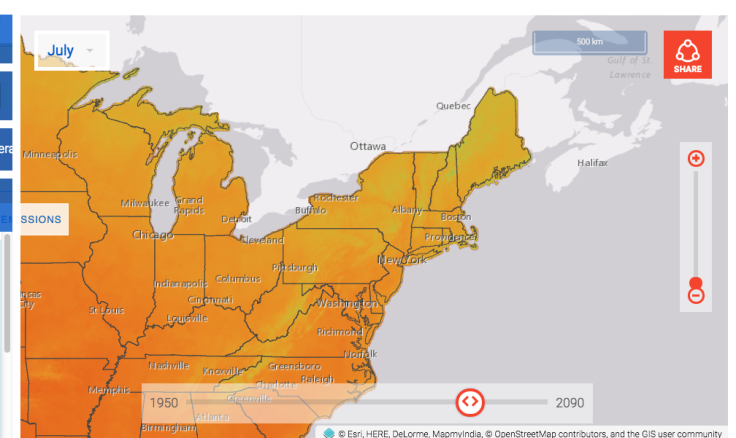2017 Climate Round-Up: Third Warmest Year, Costliest Disaster Effects Worth $306 Billion

2017 was the third warmest on record for the United States, and damages due to natural events cost the government $306 billion to repair.
New data released by the National Oceanic and Atmospheric Administration’s (NOAA) National Centers for Environmental Information shows that 2017 clinched the third place in the record books of the hottest U.S. years, since data collection began in 1895.
A graph detailing the rise in temperature in 2017 with respect to the average climate of the 20th century showed that the difference was highest in 2017. This means that the temperature increase from the 20th century average was highest in 2017. Since 2013, every year has consequently dethroned it’s predecessor to become the hottest year. 2014 was hotter than 2013. 2015 was hotter than 2014 and so-on. But, data until August shows that 2017 ranked third behind 2016, and 2015 which were the hottest 2-year period since the 20th century.
The NOAA data for the U.S. showed that the average temperatures for the lower 48 states was 54.6 degrees Fahrenheit in 2017, which was 2.6 degrees higher than the average for the 20th century. The data showed the past 5 years have been the warmest with all 5 ranking in the top 10 hottest years since 1895, which is scary to know.
Parts of the Southwest, the southern Plains and the Southeast states including Arizona, New Mexico, Georgia, North Carolina and South Carolina saw their highest-ever annual temperatures, while 32 states saw annual temperatures in their 10-most-warm.
"Not everywhere was warm, but when we do average those temperatures across the entire U.S., it ranked as the third-warmest on record," Jake Crouch, a NOAA climate scientist, said at a briefing.
The average temperature during 1901-2000 was beaten every year for the last 21 years in a row. This shows that the average annual temperature has been higher than usual and is still climbing.
The year 2017 saw many disasters hit the U.S. Several hurricanes and cyclones hit its coasts leaving states in severely debilitated conditions. As many as 16 weather and climate disasters were identified by the NOAA with each amounting to a $1 billion loss to the government each. These included two inland floods, one freeze event, eight severe storms, three tropical cyclones, as well as drought and wildfire.
The average number of events identified by the NOAA from the period between 1980 and 2017 was just 5.8 per year. But when the data from just 2013-17 was taken into account, the number climbed to 11.6 which is very unsettling.
Climate scientists have said that extreme weather is one of the risks of climate change. 2017 was by far the most expensive year for the U.S. racking up total costs of $306.2 billion in disaster effects alone. The new record far outpaced the previous record cost of $214.8 billion in 2005, a year that suffered hurricanes Rita, Wilma, Dennis and Katrina.
Just for hurricanes alone, the costs were estimated to be some $265 billion in losses out of the total $306 billion. The year 2017 was also the most expensive wildfire season, with a price tag of $18 billion, which triples the cost of the previous wildfire record from 1991.
© Copyright IBTimes 2025. All rights reserved.





















